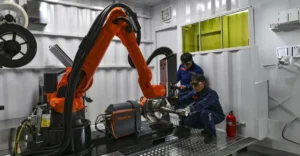Leading 3D printing companies leverage proprietary materials to secure competitive advantage in evolving market.
The battle to own the market for 3D printing has moved to yet another front: the material used to print objects. Special materials become a very important source of profit – as well as competitive factors – for industry motorists.
The proprietary thermoplastic materials of Stratasys and photopolymer resins and metal powders from 3D Systems continue to lead as well. Its with many dozens of specialty powders that HP is building its own market around the powders optimized for the company’s own Multi-Jet Fusion technology.
The race is on Intellectual property Its abundant natural resources have also made nanotechnology the envy of the world, and even the site of significant patent battles: Many of the world’s leading nanotech firms are jousting to protect new material recipes. High-performance polymers and metal powders are top priorities for companies like Stratasys, 3D Systems and BASF, industry analysts say.
“Some 3D printing companies have proprietary materials. Some will purchase proprietary materials from one of their partners. Others will make their own,” said Angie Szerlong, industry manager of additive manufacturing at SME.
While some companies promote open-source materials for their printers, others restrict which materials can be used with their technology. Many argue proprietary materials are essential for optimal performance.
“If you want to have optimum performance, then it’s much better if we provide the whole package,” said Patrick Dunne, VP of advanced application development at 3D Systems Corporation. “We offer a turnkey service to our customers.”
The shift from prototyping to production applications has accelerated materials development. “Once you move toward manufacturing, the material has to be good,” explained John Kawola, CEO of Boston Micro Fabrication. “You’re talking about creating something that’s going to have some longevity.”
Sometimes, a company will create bespoke materials for specific customers. Boeing, for instance, has proprietary rights to a material 3D Systems has been making for them for 20 years.
Strategic companies continue to form commercialisation partnerships with materials science companies and universities to expedite R&D in this vital field.
Read more : Reviving Antique Motorcycles with Metal 3D Printing
The emphasis on materials is expected to continue driving innovation in the 3D printing industry, with experts noting that improvements have “gone through the roof” over the past five years, enabling applications that were previously thought impossible.
































